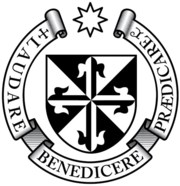Sacapulas
[3] As time went by, the k'iche' warriors realized that the aj K'ub'ul life was very different from the one they were used to have under the ruling of their king, as they simple worked on their land and crops and then enjoyed their families without having to worry about being invaded or called to fight in a war.
Therefore, they went back to their place of origin, Tujalj (Sacapulas and Canillá)), but only to pick up their families and went on to settle a new community where they were once stationed to keep an eye on the aj K'ub'ul.
[a] In the ten years after the fall of Zaculeu various Spanish expeditions crossed into the Sierra de los Cuchumatanes and engaged in the gradual and complex conquest of the Chuj and Q'anjob'al.
Gaspar Arias, magistrate of Guatemala, penetrated the eastern Cuchumatanes with sixty Spanish infantry and three hundred allied indigenous warriors.
[8] The Spanish army then marched east toward Uspantán itself; Arias then received notice that the acting governor of Guatemala, Francisco de Orduña, had deposed him as magistrate.
The Spanish forces were routed with heavy losses; many of their indigenous allies were slain, and many more were captured alive by the Uspantek warriors only to be sacrificed on the altar of their deity Exbalamquen.
The expedition rested at Chichicastenango and recruited further forces before marching seven leagues northwards to Sacapulas and climbed the steep southern slopes of the Cuchumatanes.
The Spanish continued east towards Uspantán to find it defended by ten thousand warriors, including forces from Cotzal, Cunén, Sacapulas and Verapaz.
It was important for Las Casas that this method be tested without meddling from secular colonists, so he chose a territory in the heart of Guatemala where there were no previous colonies and where the natives were considered fierce and war-like.
Because it had not been possible to conquer the land by military means, the governor of Guatemala, Alonso de Maldonado, agreed to sign a contract promising that if the venture was successful he would not establish any new encomiendas in the area.
Shielded by their apostolic privileges granted to convert natives into Catholicism, the missionaries only responded to their order local authorities, and never to that of the Spanish government or the secular bishops.
The doctrines were founded at the friars discretion, given that they were completely at liberty to settle communities provided the main purpose was to eventually transfer it as a secular parish which would be tithing of the bishop.
[19] During the Guatemalan Civil War Sacapulas found itself in the area where the Ejército Guerrillero de los Pobres -one of the guerrilla organizations that operated in Guatemala- was active.
This organization justified its terrorist attacks against private and public infrastructure by saying that they only impacted the economic interests of both State and the country's productive sector and that it made the Guatemalan Army more vulnerable.
[21] The EGP attacks that affected Cunén were: In order to counterattack the guerrilla offensive after the victory of the Sandinista Revolution in Nicaragua in 1979, general Lucas García's government began a "Scorched earth" offensive of its own in the area controlled by the Ejército Guerrillero de los Pobres, -Chajul, Nebaj and Ixcán in Quiché Department-i.e., agricultural and oil-reach region of the Northern Transversal strip-; as part of this offensive, there were intense attacks on civil communities with resulted in massacres that were duly recorded in both the REHMI[25] and Comisión para el Esclarecimiento Histórico final reports.
The maya k'iche' population that looked for refuge in the mountains was labeled as "guerrilla" by the Army, which tighten military controls around them and continuous attacks that made extremely had to get food or medical attention.


